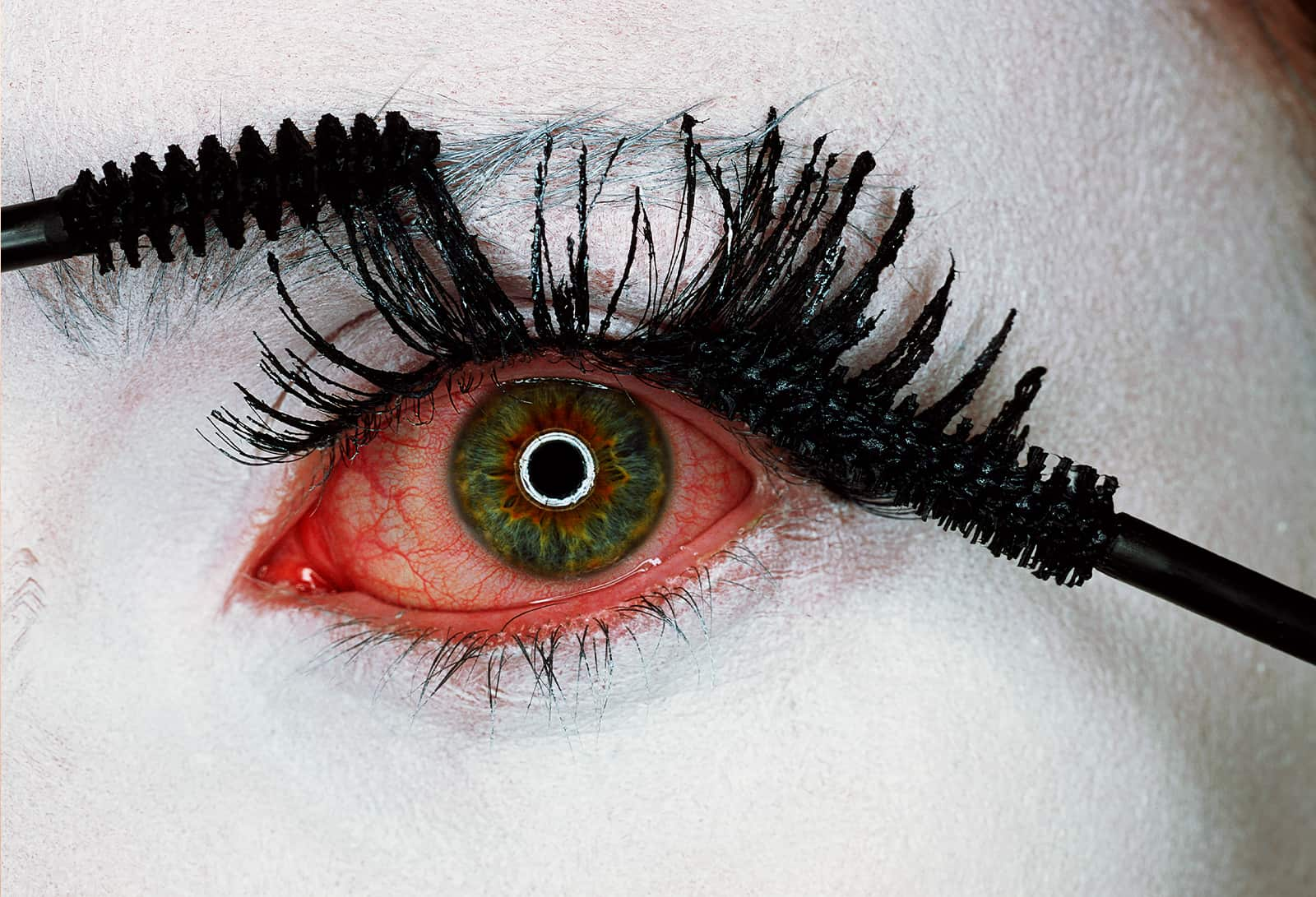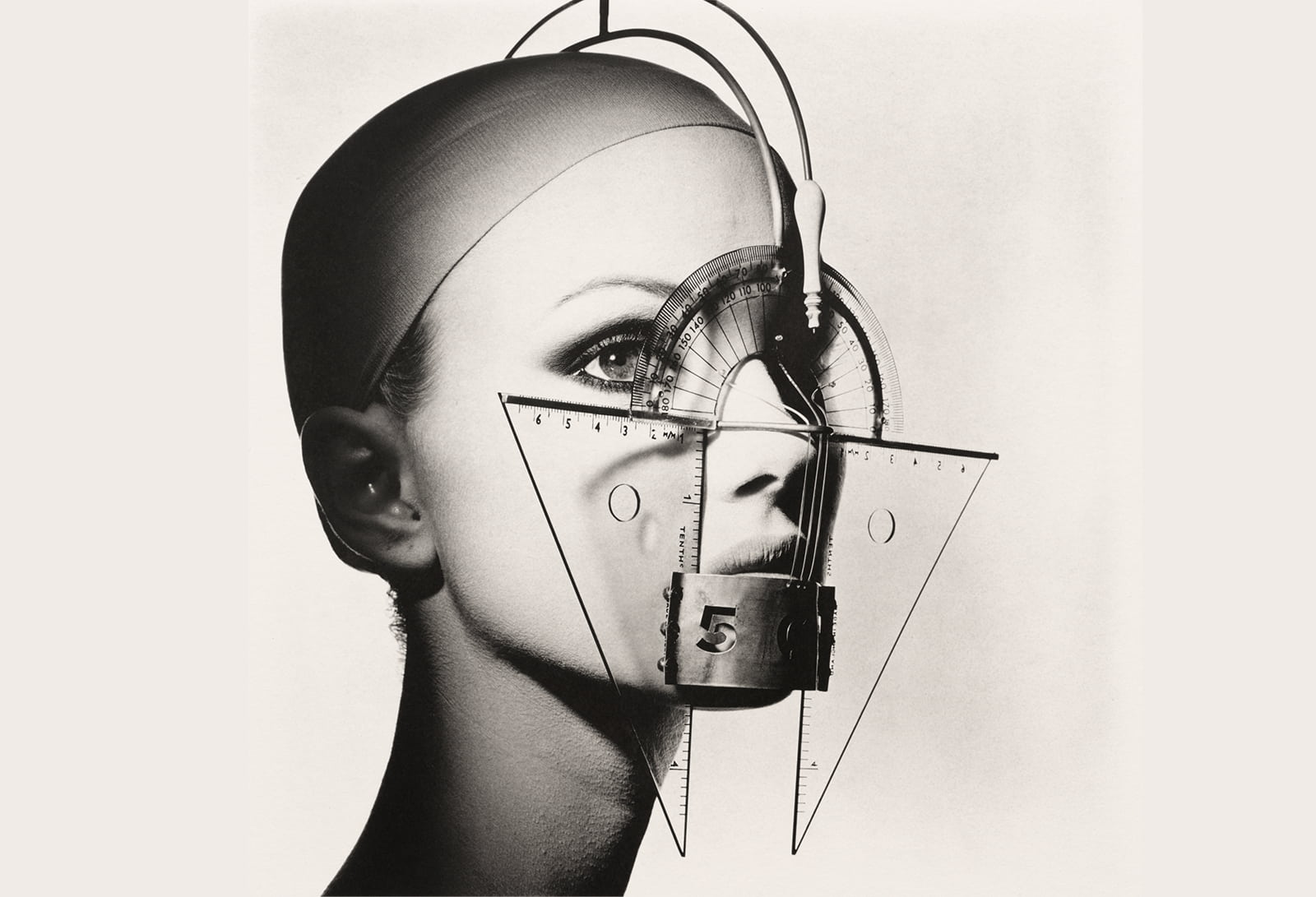Irving Penn: Edge of Beauty is an intriguing exploration of contrasts. Curated by Tom Pecheux, the Global Beauty Director for YSL Beauty, the show was co-created with Pace gallery in New York City and staged at Thaddaeus Ropac gallery in Paris.
It marks Pecheux’s curatorial debut and featured 14 photographs, many from Penn’s 65-year tenure at Vogue. “All the pictures are incredible, but when you put them together, the conversation is like poetry: words on their own have a certain meaning, but when you put them next to each other, you have the most incredible dream,” he comments. “That's what I find phenomenal, because especially now when everything is going so fast, you see Mr. Penn, and not only the quality, but also the longevity, that phenomenon.”
Penn’s images are timeless no doubt, but they are also more than simply beautiful imagery. There are Surrealist elements, with comparisons drawn to the work of Man Ray. “Protractor Face (Jaime Rishar)” is a black-and-white study of facial geometry, symmetry, and proportion. It also comments on the pursuit of numerical perfection.
“Bee on Lips” is a humorous take on bee-stung lips, placing the insect on a vibrant mandarin orange mouth. A minimalist image with maximum impact, somewhere between the sweetness of honey and the threat of the sting. “Mascara Wars” depicts a white-powdered face with spidery black lashes and an extremely bloodshot eye as mascara is being applied: a commentary on the pain of beauty, on the interplay between the artificial representation with the fallible flesh.
Penn’s work still finds new life forms to this day. Some might call “Clear Plastic Beauty Mask” a dystopian 1996 predecessor of the viral porcelain glass doll skin created by Pat McGrath for the Maison Margiela Artisanal spring/summer 2024 collection. “After 40 years of being in this business, Mr. Penn inspires so many people in the beauty world, the fashion world, the aesthetic world. When you see his work, you realize how much inspiration and influence he brought not only into the beauty business, but the world,” Pecheux adds.
Other images indirectly reference beauty as a more philosophical concept, like “Gerbera Daisy/Gerbera Jamesonii 'Husky,'” which depicts three flowers with drooping petals, laying their most inner parts bare, hanging in the delicate balance between life and decay.
Alexander Liberman, former editor of Vogue, referred to his images as “stoppers” in the sense of how they could arrest the wearer in time and space upon initial viewing. But Penn himself stopped moments in time. Take for example “Milk Slash,” a capturing of the moment when milk hits the face, dissected with light and shadows.
Born in New Jersey in 1917, Penn studied at the Philadelphia Museum School of Industrial Arts and also on pioneering art director Alexey Brodovitch’s Design Laboratory course. He landed his first Vogue cover in October 1943. But his work didn’t simply reign in the pages of fashion publications, but also the art world. His photography (specifically the “Cigarette” series) first appeared in the fine art space in 1975 at The Museum of Modern Art, New York.
Pace approached Pecheux, a frequent collaborator of the photographer, about creating the show. It was produced in partnership with the Irving Penn Foundation. “They opened up all the doors to the archive, it was an incredible journey,” he recalls.


The makeup artist first encountered Penn in the very early days of his career. For Pecheux, whose family came from the world of farming and winemaking, the beauty industry and working on set were completely new territory—a region in which Penn had a notable influence. “I had to learn everything from scratch. I just loved it, but I didn't have the keys or the education. I had to learn by training and opening my eyes to what I liked and didn’t like. I knew Mr. Penn was a talented photographer, but back then, it's only when I was on set with him that I quite and not fully recognized how genius this gentleman was,” he recalls.
Pechuex describes their working partnership as “fascinating.” The precision of the photographer’s working process was especially formative. “As a young makeup artist I was running everywhere and full of energy and he, as a master photographer with maturity, every inch of his energy was well placed. There is no waste,” Pecheux proclaims, whether that waste refers to time or every millimeter of the image. “When you were working with Mr. Penn you were working with a master, but also an orchestra conductor. He was a leader. It doesn't mean that the rest of the orchestra was not important,” he adds. “The work is not only to take the picture, but the thought he was putting into the image it was choosing the people who he was going to collaborate with to create it. He was a true visionary.”
What’s so exciting about Penn’s work is that decades later, it still strikes up conversations about what truly makes a beauty image timeless. To that question Pecheux’s response is simply “Beauty. It’s the same for everything, when something is well thought out, well made, well designed, it lasts forever. It’s magic, when the stars are aligned and you create beauty.”
Look at an Irving Penn image and you will find a plethora of references, many layers to unpack, whether it’s your first or tenth time looking at it. “What makes this world beautiful is the diversity, and there are many ways of creating that diversity,” Pecheux notes. That diversity can also be applied to different approaches to makeup application. “Certain makeup artists completely hide their canvas and with makeup create a completely new person. My vision of beauty is more of using the canvas that I have and making the best of it. I want makeup to increase their unique beauty. But there is no school for good taste. Anything is your taste or it isn’t and, and Mr. Penn is definitely my taste,” he enthuses.
For the makeup artist, turning his attention from colors, pigments, and textures, to the blank canvas of staging an exhibition was a new challenge. “My makeup is hopefully good because I get inspired by the woman who is sitting on my chair. She is a creator. I'm just following a soul, I'm following her. It's a chemistry that you have between two human beings. You paint on something with a life. But a white canvas was the rough part to start with,” he states.
The inspiration that might have been lacking with the blank slate came flooding in when he opened the Irving Penn archives. “It reminded me of Mr. Saint Laurent, when you dig into the archive, you suddenly don't feel lonely because those archives are so rich. They fill up your basket in seconds with joy, surprise, pleasure, and sometimes anxiety and darkness too. Both Mr. Penn and Mr. Saint Laurent had a dark side,” Pecheux explains. “That's what I love in these pictures as well: the duality. The bright and the dark side, the night and the day, the beautiful and ugly, the alive and dead. It's fully sunny but if you look it the back [of the horizon], you will see a big black cloud.”
The exhibition has also brought Pecheux to a new understanding of his work. “When I worked with him, I didn't really see the dark side of him. It's much later on that I realized that he managed to turn everything that is supposed to be ugly and dark into something beautiful. That is, in the end, the most inspiring to me,” he concludes. “We all have a dark side. Sometimes it’s very difficult to light up that dark side and to make it bright and sunny. Some people can fall off into the dark side. Mr. Penn was able to play with that dark side that we all have and to make it bright and beautiful.”